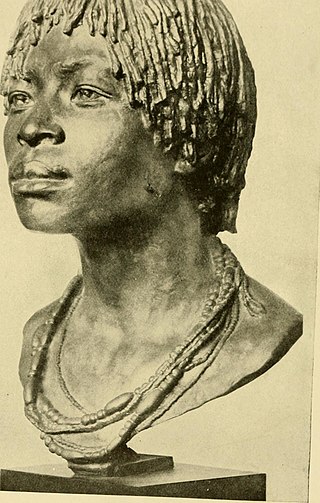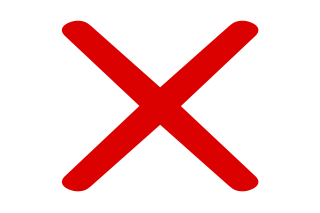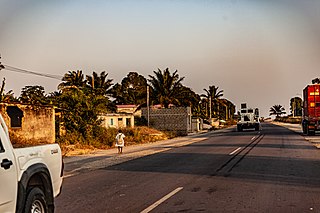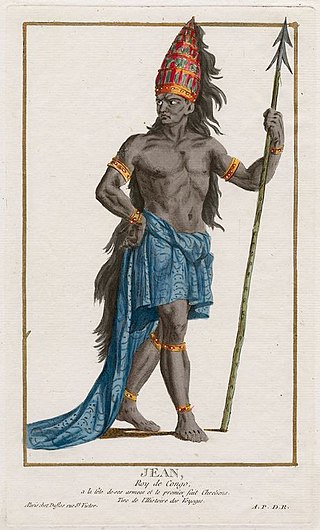
Central Africa is a subregion of the African continent comprising various countries according to different definitions. Middle Africa is an analogous term used by the United Nations in its geoscheme for Africa and consists of the following countries: Angola, Burundi, Cameroon, Central African Republic, Chad, Democratic Republic of the Congo, Republic of the Congo, Equatorial Guinea, Gabon, Rwanda, and São Tomé and Príncipe. These eleven countries are members of the Economic Community of Central African States (ECCAS). Six of those countries are also members of the Economic and Monetary Community of Central Africa (CEMAC) and share a common currency, the Central African CFA franc.

The Kongo people are a Bantu ethnic group primarily defined as the speakers of Kikongo. Subgroups include the Beembe, Bwende, Vili, Sundi, Yombe, Dondo, Lari, and others.
The Kingdom of Ndongo, 1515-1909, was an early-modern African state located in the highlands between the Lukala and Kwanza Rivers, in what is now Angola.
The pre-colonial history of the modern-day Democratic Republic of the Congo encompasses the history of the Congo Basin region up to the establishment of European colonial rule in the era of New Imperialism and particularly the creation of the Congo Free State and its expansion into the interior after 1885. As the modern territorial boundaries of the Democratic Republic of the Congo did not exist in this period, it is inseparable from the wider pre-colonial histories of Central Africa, the Great Lakes and Rift Valley as well as the Atlantic World and Swahili coast.

The Kingdom of Loango was a pre-colonial African state, during approximately the 16th to 19th centuries in what is now the western part of the Republic of the Congo, Southern Gabon and Cabinda. Situated to the north of the more powerful Kingdom of Kongo, at its height in the 17th century Loango influence extended from Cape St Catherine in the north to almost the mouth of the Congo River.

Álvaro I Nimi a Lukeni lua Mvemba was a Manikongo, or king of Kongo, from 1568 to 1587, and the founder of the Kwilu dynasty.

The Kingdom of Kongo was a kingdom in Central Africa. It was located in present-day northern Angola, the western portion of the Democratic Republic of the Congo, Southern of Gabon and the Republic of the Congo. At its greatest extent it reached from the Atlantic Ocean in the west to the Kwango River in the east, and from the Congo River in the north to the Kwanza River in the south. The kingdom consisted of several core provinces ruled by the Manikongo, the Portuguese version of the Kongo title Mwene Kongo, meaning "lord or ruler of the Kongo kingdom", but its sphere of influence extended to neighboring kingdoms, such as Ngoyo, Kakongo, Loango, Ndongo, and Matamba, the latter two located in what is Angola today.

Soyo is a city, with a population of 200,920, and a municipality, with a population of 227,175, located in the province of Zaire in Angola, at the mouth of the Congo river. Historically, Soyo was a significant city in conflicts between the Kingdom of Kongo, Portuguese Angola, and the Dutch West India Company. Soyo became an independent state in the 17th century and had significant influence on politics in Kongo during the Kongo Civil War.

The Bemba belong to a large group of Bantu peoples, primarily in the Northern, Luapula, Muchinga and the northern Central Province of Zambia. The Bemba entered Zambia before 1740 by crossing the Luapula River from Kola. Several other ethnic groups in the northern and Luapula regions of Zambia speak languages which are similar to Bemba, but have different origins. The Bemba people are not indigenous to Copperbelt Province; they arrived there during the 1930s due to employment opportunities in copper mining.

The Catholic Church arrived in the Kingdom of Kongo shortly after the first Portuguese explorers reached its shores in 1483. Portuguese left several of their own number and kidnapped a group of Kongo including at least one nobleman, Kala ka Mfusu, taking them to Portugal where they stayed a year, learned Portuguese and were converted to Christianity. The group was returned to Kongo in 1485 and Kala ka Mfusu led a royal mission from Kongo's manikongo, Nzinga a Nkuwu to Portugal. Following their arrival in late 1486 the embassy stayed nearly four years in Lisbon with the monks of Saint John the Baptist. There they studied Christianity and Portuguese with Vicente dos Anjos, and began the start of a Kongolese version of Christianity.

Nkumbi-a-Mpudi Diogo I was manikongo in 1545–1561. King Diogo was the grandson of king Afonso I of Kongo and won the throne after overthrowing his uncle Pedro Nkanga a Mvemba and forcing him to take refuge in a church in São Salvador. Diogo's early struggles are documented in a legal inquest he conducted in 1550 into a plot against him launched by the former king. In 1555, the king cut all ties with the Portuguese whom he saw as meddlesome and a threat to the kingdom and expelled all 70 Portuguese inhabitants from the kingdom.

Mvemba a Nzinga, Nzinga Mbemba, Funsu Nzinga Mvemba or Dom Alfonso, also known as King Afonso I, was the sixth ruler of the Kingdom of Kongo from the Lukeni kanda dynasty and ruled in the first half of the 16th century. He reigned over the Kongo Empire from 1509 to late 1542 or 1543.

Nzinga-a-Nkuwu João I was the 5th ManiKongo of the Kingdom of Kongo between 1470 and 1509. He voluntarily converted to Roman Catholicism. He was baptized on 3 May 1491 and took the Christian name of João. Soon after, ManiKongo Nzinga-a-Nkuwu João I abandoned the new faith for a number of reasons, one of them being the Roman Catholic Church's requirement of monogamy. Politically, he could not afford to abandon polygamy and embrace monogamy, a cultural shift that the king could not contemplate as power in Kongo was elective, rather than hereditary as in Europe; as Kongo culture followed a matrilineality structure, where the elder son of the king is not automatically the next king.

Pedro II Nkanga a Mvika was a ruler of the kingdom of Kongo during the kingdom's first conflict with the Portuguese. He was the founder of the royal House of Nsundi and could trace his descent to one of Afonso I's daughters. He was succeeded by his son Garcia I, who was crowned in 1624.
Afonso II was a ruler of the Kingdom of Kongo in 1561.

Bernardo I of Kongo was a 16th-century manikongo (ruler) of the Kingdom of Kongo, a region encompassing areas in 21st-century Angola and the Democratic Republic of Congo. He came to power after murdering his half-brother Afonso II who was less well-disposed toward the Portuguese.
The Seven Kingdoms of Kongo dia Nlaza were a confederation of states in west Central Africa that were absorbed into the Kingdom of Kongo in the 16th century, being mentioned in the titles of King Alvaro II in 1583. This polity or region was first mentioned in texts of the Kingdom of Kongo in the late 16th century, although it probably existed much earlier. It was only then being incorporated into Kongo, through the kingdom's eastern province of Mbata Kingdom. It is unclear what the Seven Kingdoms were, though perhaps they included Kundi and Okanga. Presumably these kingdoms represented an alliance of several smaller polities, though the sources of the time tell us nothing about it.

M'banza-Kongo, is the capital of Angola's northwestern Zaire Province with a population of 148,000 in 2014. M'banza Kongo was the capital of the Kingdom of Kongo since its foundation before the arrival of the Portuguese in 1483 until the abolition of the kingdom in 1915, aside from a brief period of abandonment during civil wars in the 17th century. In 2017, M'banza Kongo was declared a UNESCO World Heritage Site.
Afonso V of the Congo was a Kinlaza manikongo of the Kingdom of Kongo from 1785 to 1787.















